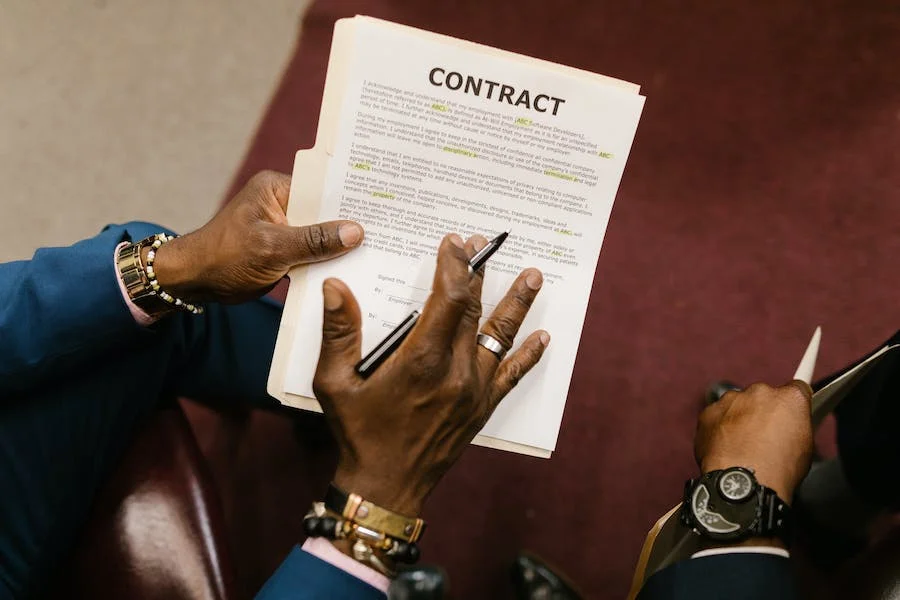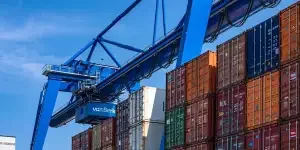Global sourcing is a supply chain management strategy that allows companies to gain access to resources, goods, and services from vendors across the world. Unlike domestic sourcing, which is a bit like shopping at the local store, global sourcing gives businesses a passport to the global market.
Here are just some benefits of global sourcing:
- Cost reduction: With global sourcing, companies can purchase materials or services at lower costs from countries with low labor rates, favorable economic conditions, or an abundance of resources.
- Diversity of resources: Global sourcing widens the range of resources available, including raw materials or products not found locally. For instance, a chocolatier in the USA may source cacao directly from Ecuador or Ghana to ensure the highest quality.
- Competitive advantage: Operating in broader markets could also lead to competitive advantages such as unique product offerings, improved business processes, or better market positioning.
However, despite its many benefits, global sourcing can lead to crippling pitfalls for companies that aren’t careful about how they approach it. Read on to explore seven common mistakes businesses make when they first begin sourcing from global markets—and how to avoid them!
Table of Contents
Inadequate supplier evaluation
Neglecting foreign regulations
Lack of contract clarity
Assuming that suppliers bear all costs
Long-term dependency without backup
Avoiding on-site visits
Not having an exit strategy
The importance of strategic thinking when sourcing globally
1. Inadequate supplier evaluation
One common mistake many companies make when sourcing from international markets is the inadequate evaluation of potential suppliers. This oversight can lead to a variety of issues, including low-quality products, delays in delivery, poor communication, and financial losses.
To steer clear of these pitfalls and challenges, businesses must adopt the following best practices when selecting potential suppliers:
- Develop a thorough evaluation process: Creating a comprehensive supplier evaluation checklist is critical in assessing the viability of a potential partnership. This checklist should include criteria for evaluating suppliers, incorporating key performance indicators (KPIs) such as quality, delivery time, cost, and communication.
- Carry out due diligence: A thorough investigation of potential suppliers is essential. This includes verifying business certifications, reviewing financial records, and seeking feedback from other companies/customers in the industry. This research helps businesses make informed decisions and prevent potential supply chain disruptions.
- Request samples and perform quality audits: Requesting samples of products before committing to a long-term contract ensures a supplier can meet agreed-upon expectations. Regular quality audits further maintain high standards and facilitate early identification of potential issues.
- Evaluate capacity and scalability: Considering the supplier’s ability to produce the required quantities on time, even during peak demand periods, provides insight into their reliability. Furthermore, assessing if the supplier can scale up production to meet future needs is crucial for long-term business growth.
2. Neglecting foreign regulations

When adopting a global procurement strategy, businesses source raw materials and skilled labor from foreign countries. However, disregarding customs regulations, labor laws, and environmental standards in the supplier’s home country can result in legal complications, penalties, shipping delays, or even a complete prohibition of imported goods.
For instance, certain Chinese raw materials are subject to stringent export restrictions, and additional tariffs when imported into the United States. A real-life example of this is a US electronics company that sources rare earth metals from China for manufacturing smartphone components.
Unaware of China’s strict export restrictions and punitive US tariffs on these metals, the company might face several challenges, such as lengthy shipping delays due to held-up shipments at customs, and significantly higher landed costs due to tariffs. By staying informed, collaborating with import/export experts, and keeping track of changes in international regulations, businesses can successfully navigate the complexities of global sourcing.
3. Lack of contract clarity

In the complex world of international trade, a crucial yet occasionally overlooked aspect of procurement procedures is contract clarity. A vague or imprecise contract can lead to misunderstandings and conflicts, causing significant disruption in the supply chain and detrimentally affecting relationships along the line.
Imagine a French furniture company involved in a sourcing contract with a Brazilian supplier for certified, sustainably sourced mahogany. However, the contract is ambiguous in defining the specific sustainability standards and penalties for not adhering to them.
When the supplier delivers mahogany harvested from an uncertified source, the furniture company pays a substantial price. It attracts public criticism and faces potential sanctions from regulatory bodies, resulting in a breach of sustainability ethics that could damage the firm’s reputation.
To avert such costly and reputation-damaging issues, businesses must create clear, detailed, and comprehensive contracts. These contracts must explicitly detail expectations for the procurement of goods or services, delivery timelines, quality standards, penalties for non-compliance, and payment terms. Additionally, a clearly defined process for resolving disputes should be included.
4. Assuming that suppliers bear all costs

Many beginner business buyers assume suppliers bear all related expenses, allowing for lower costs on their end. They pay for the goods, and all looks well set. They expect that transportation costs, insurance, and even the (sometimes) formidable customs duties will be managed seamlessly by their suppliers.
Little do they know, a storm of hidden expenses waits on the horizon, ready to drain their profit margins. Thankfully, Incoterms are here to save the day! These International Commercial Terms regulate which party takes care of transportation, insurance, and taxes and at what stage the risk of the shipment is transferred from one party to another.
For businesses, understanding these terms isn’t a luxury but a must! Picture a chic clothing boutique in New York importing glamorous designer pieces from Italy. The supplier offers a price under the EXW (Ex Works) term, meaning their responsibility concludes as soon as the clothes are out of their factory.
Riding high on the anticipated profits, the boutique agrees — only to face a harsh reality check. They are now responsible for the costs to collect the clothes from the Italian factory, ship them across the Atlantic, clear U.S. customs, and finally transport them to their Manhattan boutique. Understanding and using Incoterms like EXW, FOB, CIF, and others can save (or prepare) the retailer from these unexpected costs.
5. Long-term dependency without backup
Another commonly seen global sourcing mistake is relying too heavily on one supplier. With fewer negotiations, less paperwork, and consistent product quality, it might seem like a dream come true. However, this long-term dependency without a backup plan can create grave vulnerabilities.
Take, for example, a European toy retailer sourcing a particular line of plush toys from a Chinese manufacturer. Suppose a large shipment is received with a manufacturing defect in several batches, rendering the toys unfit for sale. If this was their sole supplier, the store might be left empty, and customers disappointed, just before the holiday rush.
To mitigate these risks, a robust global sourcing strategy is essential. One such approach is to diversify the supplier base, involving multiple suppliers from diverse geographical locations. Companies can categorize suppliers into different levels based on factors like performance history, cost, quality, and reliability:
- Primary suppliers are the go-to for normal operations. They’re typically reliable, offer competitive prices, and can meet volume requirements.
- Secondary suppliers are backups to the primary suppliers. They’re capable of ramping up production when necessary and are positioned to slide into the primary spot if something goes awry.
- Tertiary suppliers may serve as more of an emergency backup. Their pricing, quality, or lead times may not be as competitive as the primary or secondary suppliers, but they can still fulfill businesses’ needs in a pinch.
6. Avoiding on-site visits
Digital advancements have streamlined communication and processes in global sourcing, leading businesses to rely heavily on virtual interactions to understand their suppliers’ operations. However, these digital interactions only provide an incomplete view. It’s analogous to viewing a product through a storefront window—we can see what’s displayed but miss out on the crucial details.
On-site visits, on the other hand, offer exhaustive insights into areas that digital platforms can’t replicate. Suppose a European electronics company is sourcing capacitors from a Chinese supplier. Their interactions, conducted primarily online, have led the company to believe that their supplier manufactures these products.
However, an on-site visit reveals a different scenario—the supplier is a trader, not a manufacturer. The real manufacturer is another entity based in a different locale with a less rigorous quality control standard. Does this mean that businesses should avoid sourcing from countries where in-person visits might be challenging? Absolutely not.
Thankfully, digital innovations like Alibaba.com’s Virtual Reality (VR) showrooms bridge the gap. These digital showrooms allow suppliers to display their products in a detailed 360-degree virtual environment. It closely mimics an in-store shopping experience, virtually erasing geographical boundaries.
Check out this VR showroom of a plastic packaging supplier, for example. Businesses can gain an initial understanding of the products through an engaging AI-guided factory tour. They can view the high-speed printing machinery used in production, and observe its operation in videos.
7. Not having an exit strategy
Any business relationship, including those with suppliers, may sometimes pan out differently than expected. Factors such as misunderstandings, volatile market conditions, or cultural misalignment could necessitate an end to the relationship.
In such cases, without a carefully constructed exit strategy, the process of dissolving a global sourcing contract can become tremendously intricate. The fallout can be time-consuming, expensive, and potentially damaging to the business’s reputation.
Here are the steps businesses should consider to develop an effective exit strategy:
- Analyze the current contract: Audit the existing contractual terms meticulously. Pay close attention to the clauses concerning contract termination. For example, a 60-day notice for termination might be necessary according to the contract.
- Define clear objectives: Jot down the precise outcomes desired from the exit strategy. This could range from minimizing downtime and mitigating legal risks to controlling financial implications.
- Engage a new supplier: Having a reliable backup supplier is integral to minimizing disruptions in the supply chain. Initiate the relationship by placing an order distinctly smaller than the regular batch size – about one-tenth. Once the supplier repeatedly fulfills these orders successfully, and confidence grows, gradually increase the order size.
- Develop a transition plan: This may encompass transferring proprietary knowledge or providing essential resources to the new supplier to ensure operational continuity. For instance, if the current supplier was providing customized vehicle parts, the transition plan might entail sharing specific designs, specifications, or even installation methodologies with the new supplier.
The importance of strategic thinking when sourcing globally
These seven mistakes underline the importance of maintaining diligence and strategic thinking while developing global sourcing strategies. By looking beyond the tempting allure of the lowest price from foreign suppliers, businesses can set themselves on a trajectory toward long-term success.
Wondering how to get started with strategic global sourcing? Check out this 7-step template to learn how to find the right suppliers, negotiate the best prices, and manage the supply chain better than ever before!

Looking for a logistics solution with competitive pricing, full visibility, and readily accessible customer support? Check out the Alibaba.com Logistics Marketplace today.



